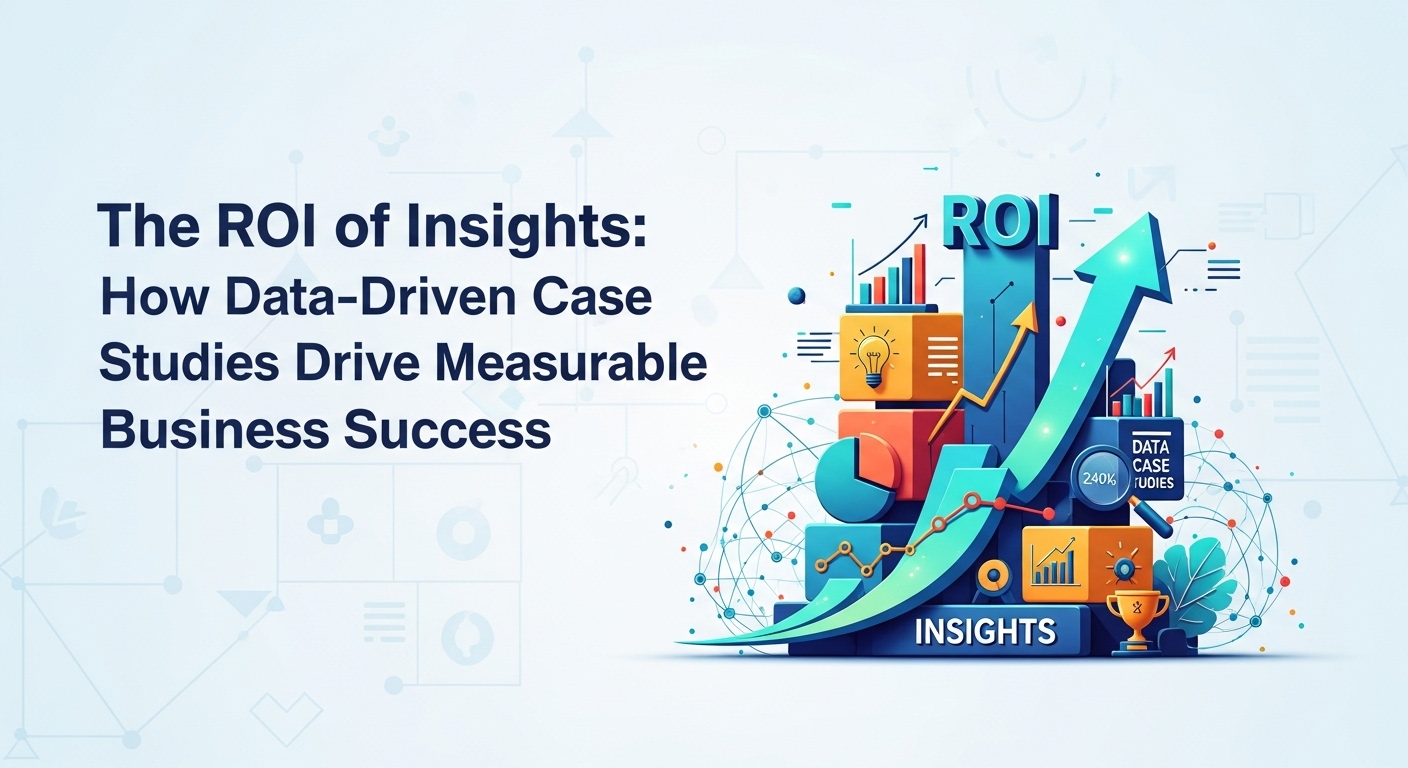The Difference Between Data and True Insight
In today’s business landscape, we’re drowning in data. We have analytics for website traffic, engagement metrics on social media, open rates for email campaigns, and a dozen other KPIs. But data, in its raw form, is just noise. It’s a collection of numbers and figures waiting for a story. The real magic, the kind that transforms businesses, happens when that data is translated into actionable insights. And there is no more powerful vehicle for showcasing these insights than a well-crafted, data-driven case study.
Many businesses mistake case studies for glorified testimonials. They get a happy quote from a client, pair it with a logo, and call it a day. While social proof is valuable, this approach barely scratches the surface. True case studies & insights are not just about a happy customer; they are about a successful customer. They are detailed narratives that follow a clear arc: a challenge, a solution, and most importantly, a measurable, data-backed result. They transform abstract claims about your product or service into concrete, undeniable proof of its value, demonstrating a clear return on investment (ROI).
The Tangible ROI of Powerful Case Studies & Insights
Investing time and resources into developing detailed case studies isn’t just a marketing expense; it’s a strategic investment that pays dividends across your entire organization. The ROI isn’t a vague concept; it’s a collection of measurable improvements to your bottom line.
Boosting Sales and Conversion Rates
At its core, a case study is a trust-building tool. When a potential customer is on the fence, reading about how a similar company overcame a familiar challenge using your solution is incredibly persuasive. It moves the conversation from “Does this work?” to “How can this work for me?” This is where data becomes your most powerful salesperson. A case study that states, “Our solution helped Company A increase their lead generation by 150% in six months,” is infinitely more powerful than a generic claim of “we improve lead generation.” This kind of specific, quantifiable proof directly addresses a prospect’s primary concern: financial risk. By demonstrating proven success, you lower the perceived risk and make the decision to buy significantly easier, leading to higher conversion rates on your website, landing pages, and sales proposals.
Shortening the Sales Cycle
The modern B2B sales cycle can be long and complex, often involving multiple decision-makers. Case studies act as a powerful accelerator in this process. Your sales team can strategically deploy them to address specific objections or concerns. Is the CFO worried about the financial outlay? Show them a case study focused on cost savings and ROI. Is the technical lead unsure about implementation? Provide a case study that details a smooth and successful integration process. By providing relevant, evidence-based stories, you equip your internal champions with the ammunition they need to sell your solution to the rest of their team. This proactive problem-solving shortens the deliberation phase and moves prospects from consideration to decision much more quickly.
Increasing Customer Lifetime Value (CLV)
The value of case studies & insights extends far beyond customer acquisition. The process of creating a case study forces you to deeply analyze what makes your customers successful. What patterns emerge? Which features of your product drive the most value? What strategies lead to the best outcomes? These insights are gold. They can be used to refine your onboarding process, guide your customer success team, and inform your product roadmap. By understanding the DNA of a successful customer, you can proactively guide other customers toward that same success, increasing their satisfaction, reducing churn, and identifying opportunities for upselling and cross-selling. This focus on repeatable success is fundamental to increasing overall Customer Lifetime Value.
Enhancing Brand Authority and Credibility
In a crowded market, authority is a key differentiator. Anyone can claim to be an expert, but a portfolio of data-driven case studies proves it. These stories position your brand as a leader that delivers real, tangible results. They become cornerstone content for your blog, webinars, and conference presentations. When you consistently publish detailed accounts of your clients’ success, you build a reputation for effectiveness and reliability. This credibility not only attracts new customers but also makes your brand more appealing to potential partners and top talent. You are no longer just a vendor; you are a proven strategic partner in your clients’ growth.
How to Craft a Compelling Data-Driven Case Study
Creating a case study that generates real ROI requires more than just good writing. It requires a structured approach focused on telling a compelling story backed by hard evidence.
Step 1: Start with the ‘Why’ – The Customer’s Challenge
Every great story begins with a conflict. Before you even mention your solution, you must paint a vivid picture of the problem your customer was facing. Use specific details. What were their pain points? What metrics were suffering? What was the business cost of inaction? This sets the stage and makes the subsequent results far more impactful. The reader should be able to see their own challenges reflected in this initial scenario.
Step 2: Showcase the ‘How’ – Your Solution in Action
Once the problem is established, introduce your solution. Don’t just list features. Explain the strategic process. How did you work with the client to implement your product or service? What was the timeline? Why did you choose a particular approach? This section demonstrates your expertise and collaborative spirit. It shows that you don’t just sell a product; you provide a comprehensive solution tailored to the client’s unique needs.
Step 3: Prove the ‘What’ – The Measurable Results
This is the heart of your case study. The results section must be packed with concrete data. Use numbers, percentages, and quantifiable metrics whenever possible.
- Before and After: Show a clear comparison of key metrics before and after your intervention.
- Quantifiable Improvements: Use phrases like “Reduced operational costs by 35%,” “Increased organic traffic by 200% in 9 months,” or “Improved customer retention by 18% year-over-year.”
- Customer Quotes: Weave in a powerful quote from your client that speaks directly to the results and their satisfaction.
This is where you prove your value beyond a shadow of a doubt. The more specific and impressive the data, the more persuasive your case study will be.
Step 4: Extract the ‘So What’ – The Core Insight
Finally, conclude with the core insight. Go beyond the numbers to explain what they mean. What was the ultimate business impact? How has this success transformed the client’s operations or market position? This is where you connect the dots for the reader, summarizing the key takeaway and reinforcing the value proposition. This is the ‘insight’ that makes your case study a truly valuable piece of content, not just a list of achievements.
Your Next Step: Unlock Your Business’s Success Stories
Data-driven case studies are more than just marketing collateral; they are a strategic asset that validates your marketing claims, empowers your sales team, and provides invaluable insights for your entire organization. The ROI is clear and multifaceted, impacting everything from lead generation to customer retention. Stop letting your greatest success stories go untold. Look at your happiest, most successful clients. The data to prove your value is already there, waiting to be shaped into a compelling narrative.
By investing in the creation of high-quality case studies & insights, you are investing in a cycle of success. You showcase client achievements, which in turn attracts new clients, creating more opportunities for success stories. It’s time to move beyond simple testimonials and start proving your impact with the undeniable power of data.


